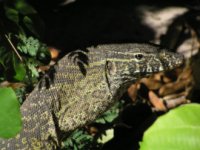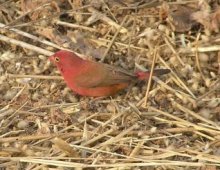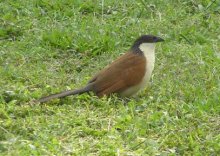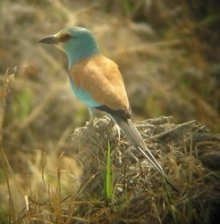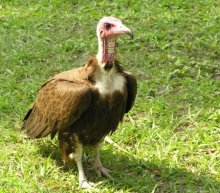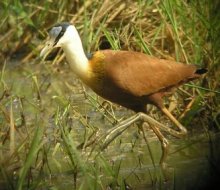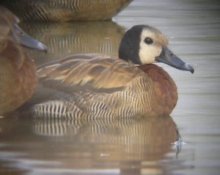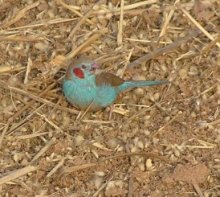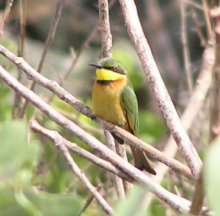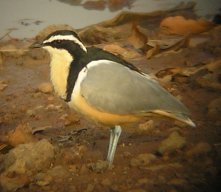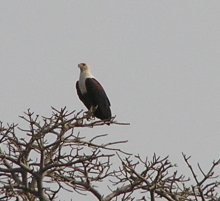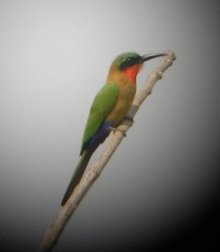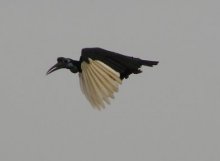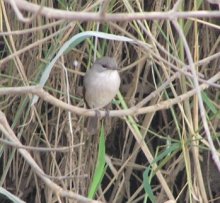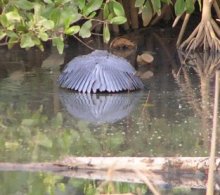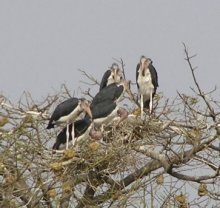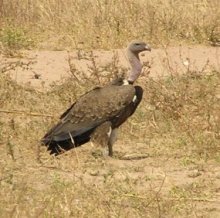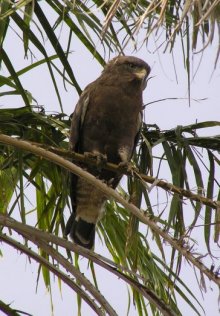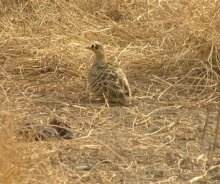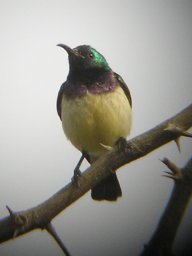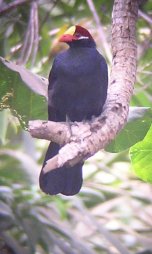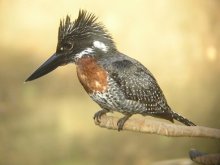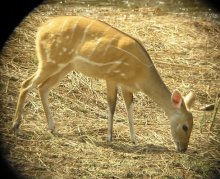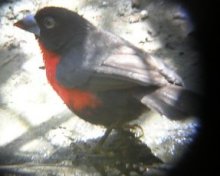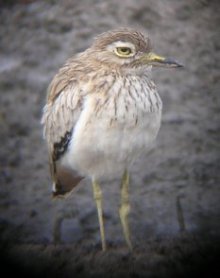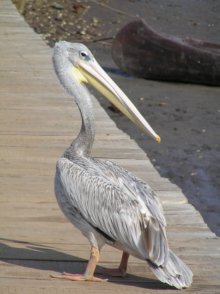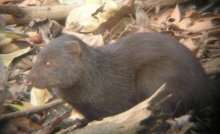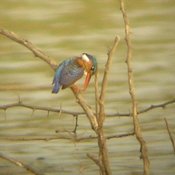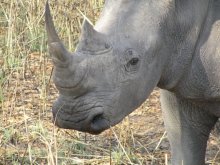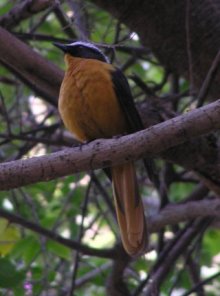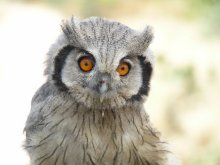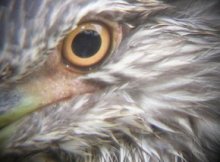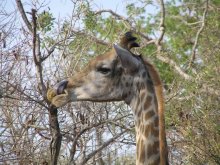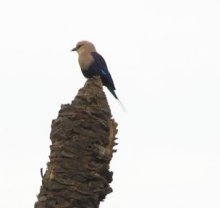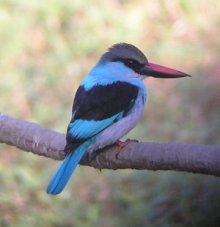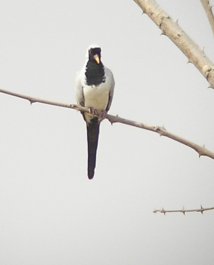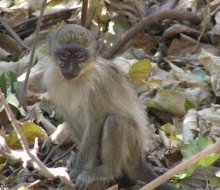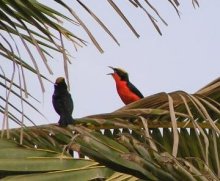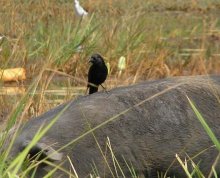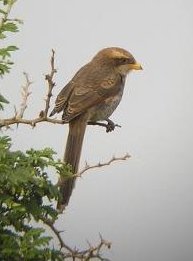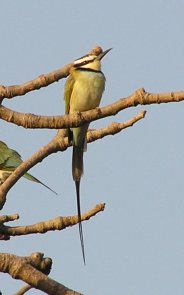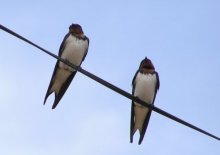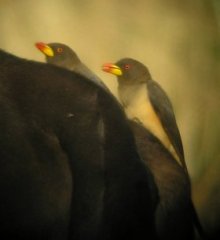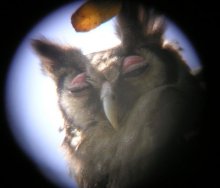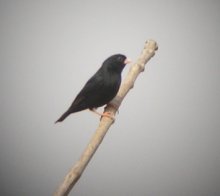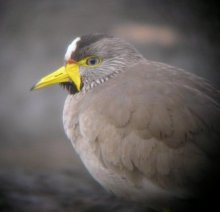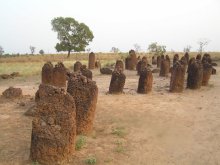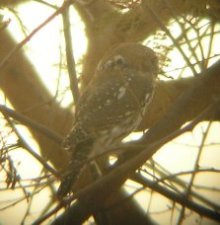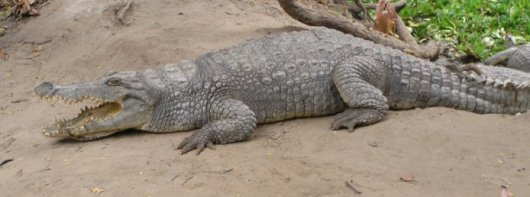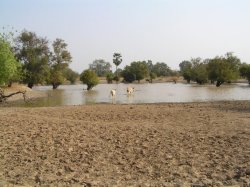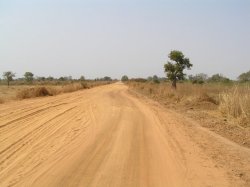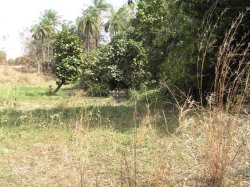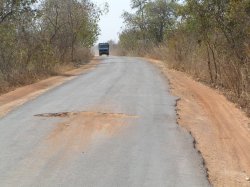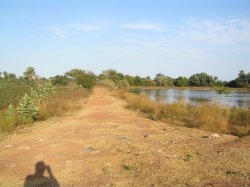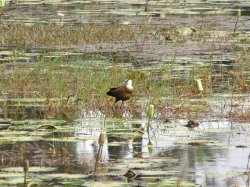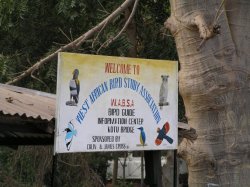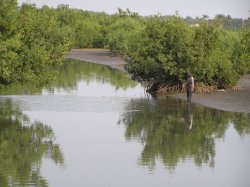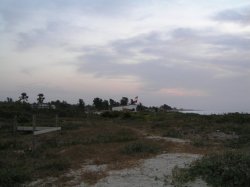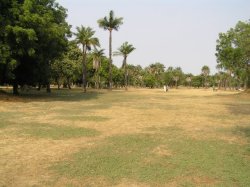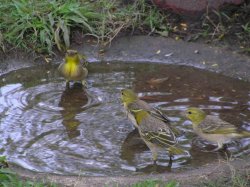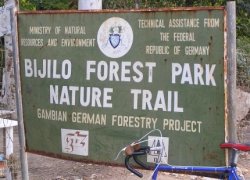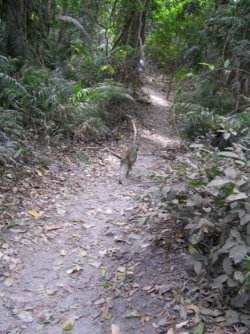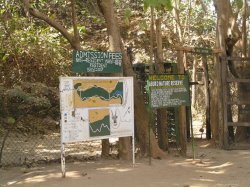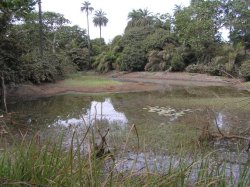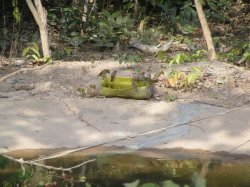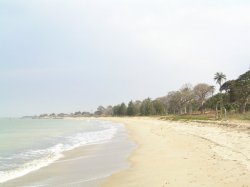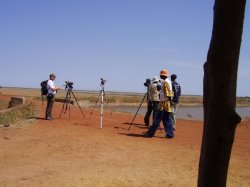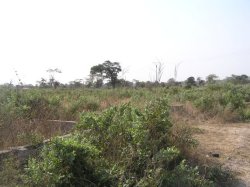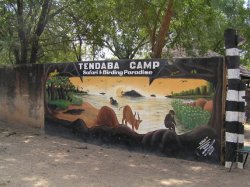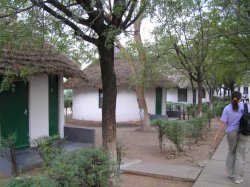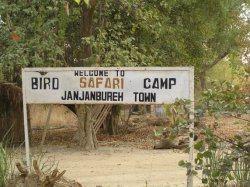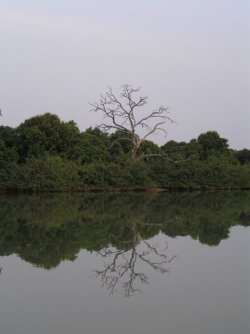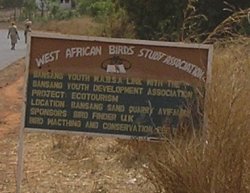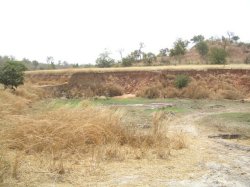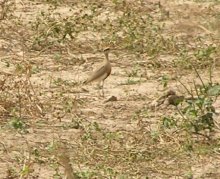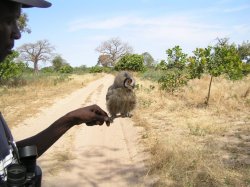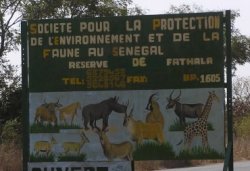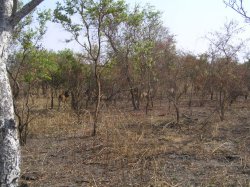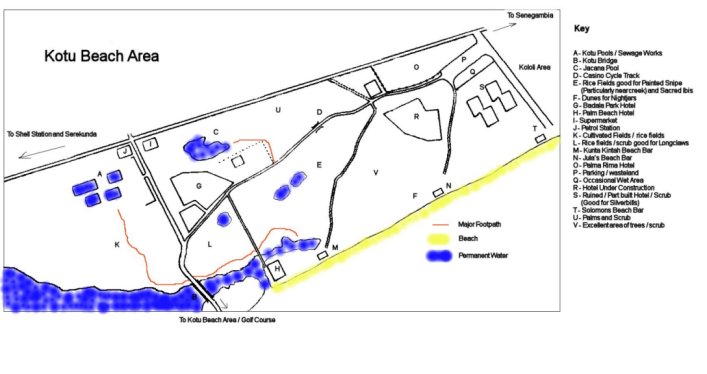
General
Information
This trip report hopefully covers not only the birding as in a typical trip report but also provide lots of other general information which might be of use when planning a trip.
We booked a package holiday with Sunset Holidays (Part of Thompson Cook) for 14 nights at Badala Park, I chose this hotel not for its luxury (Its a fairly basic hotel) but its location right in the heart of the bird watching area and its was a bargain at £364 per person for bed, breakfast, flights, flight meals and transfers. The hotel grounds were not particularly good for birdwatching however the food was very good and reasonably priced.
|
Birding
Sites Kotu Sewage pools The Kotu area, includes the sewage
pools, the creek, Jacana pool, casino cycle track and the rice fields and is
an excellent birding area see the map below. Jacana
Pool Not called this
for nothing, the place to go for Jacana’s. It is just behind the Kotu creek and rice fields. The bridge over
the creek is where the bird guides hang out paths leave here for the sewage
ponds and the other way towards Fajara Golf Course. The golf course
is easily walkable from the Kotu
creek bridge. The mixture of scrub, palm trees and fairways as well as the
creek which runs through gives a good mix of birds, the only place in the Kotu area to see black headed plovers, sunbirds, bee
eaters and wood hoopoes are common here. A good starting
point, access to the gardens is through the hotel but there was no problem at
all gaining access. Here there is
vulture feeding every day at 11.30 is does sometimes change so check, no
charge for this. The gardens hold a good number of the common species most of
which are used to people so good views can be had, useful for photography and
for getting you eye in. The small water trough to the left of the patio is
good for birds drinking and bathing. The no access area further left is excellent, just ignore the signs, no tourists here, so
this is where the real gems are. There is a copse of woodland in the middle
of the gardens also very good. The large trees on the boundary by the beach
and the gym area are also good, there is also a
small area of scrub outside the grounds worth checking. There is a pool about
as far right from the patio between some of the accommodation blocks. This
area is very good as well. Typical species - White Crowned Robin Chat, red billed and grey hornbill, green wood
hoopoe, both blue eared starlings, blue breasted kingfisher, village weaver,
lavender waxbill, red billed firefinch, grey headed
sparrow, senegal coucal,
cattle egret, pied crow, hooded vulture, eromemlela,
african thrush, common bulbul, both babblers to
name but a few Nile monitor and Green vervet monkeys as well as some of the
smaller lizards are also present. A ten min walk
from the Typical Species - The reserve is known for the white throated bee eaters, little and
swallowtail also present, selection of woodpeckers, all the common species. Abuko This is one of
the last remaining areas of gallery forest. The main area by the study centre
has two hides over looking the pools, crocodiles
live here and can be easily seen. The rest of the reserve is dense woodland
and birding need to be Typical Species - Ahanta francolin, western bluebill, Verreux's eagle owl, yellow
breasted apalis, grey headed bristle bill,
woodpeckers, all the common species also crocodile, Brufut An excellent savannah
wood and scrub reserve, there is a charge of 50d. The wood is mixed some open
areas and some thick wood, and there is a large area of scrub behind the
woodland partially farmed. The wood has a hide and a pool where lots of the
smaller birds come to drink well worth a bit of a stay. This is the place for
Klaas cuckoo. Tanji I still Pirang Known for the
cranes which are now hard to find. There is a charge of 50d to enter the
shrimp farm but the other areas are free. The locals try to charge to see the
barn owl in the kapok tree in the village. There is not
much water at this time of year so the numbers of birds are low. Typical Species - Crowned Crane, african spoonbill, yellow
billed stork, spur winged goose, quail finch, crested lark, common wader
species, mosque swallows, raptors. Mandintabia rice fields for hadada
ibis. Yundum Old Yundum is in a sorry state, (follow directions to the Yundum site given in the Wards Site Guide, follow the
track to the end) the excellent scrub is being cleared and brick compounds
made. It is still good birding but the continuing clearance is making it
harder to find good birds. There are lots of cisticolas
here and it is the top site for bronze winged courser’s.
Tendaba A great place to
stay £25 pp inc dinner and breakfast and boat trip. Cold showers and lots of
non birding tourists the only down side, much bigger and more of a tourist
trap than Bird Safari Camp. The main areas
are the airport for Abyssinian ground hornbills and nightjars. Scrub area for
brown necked parrot, and yellow crowned bishops. The creek trips
are a must, they are on the far side of the river. The thick mangroves are a
great place for finfoot, mouse browned sunbird, African
blue flycatcher, white backed night heron, goliath heron and many more. They
land in one place and walk around for black wood hoopoe, warthog, wattle eye
and more. Bird
Safari Camp An excellent
base, the place is very homely if a little basic, food is excellent,
entertainment sometimes available. Power is only available from Basse A large area of
fields and scrub to the east of the town, not easy to find, but a good
selection of birds, the area is large and lots of effort needs to go into
finding the carmine bee eaters, the main target species. Bansang Not far from On the main road
to Tanji is Ghana town, here is a good site for
temminck’s coursers, heading to Tanji look for the
new hotel being built on the right hand side, just after this look for the
small Ghana Town sign and pull over, explore the open scrub on the right hand
side. Faraba Banta Bush Track A great place
for raptors, an afternoon visit recommended, if you Reserve
de Fathala / Salome National Park This is a game
reserve on the edge of the North
Bank Shortly after Barra stop in scrub areas for northern anteater chat. Your guides will
know the places to stop, for certain key species such as Egyptian plover.
Having an open topped vehicle we could quickly pull over for any bird we saw
(there is not much traffic so you can stop anywhere). The road is terrible
not tarmac for most of the way to Farafenni. Here a
brand new road is nearing completion which goes all the way to South
Bank The road on the
south bank is mostly tarmac, but the road is very old and there has been no
maintenance ever by the state of it, there are very few sections without
major potholes, and most cars drive on the verges which are equally a rough. The
road from Two places I did
not get to visit were Marakissa and Makasutu apparently well worth a visit. North Bank South Bank |
Kotu Sewage
pools Jacana Pool Kotu Creek Kotu Dunes Fajara Golf Course Weavers at
the Bijilo Abuko Brufut Tanji Pirang Yundum Tendaba Bird Safari
Camp Bansang Quarry Temminck’s
Courser at Ghana Town Checking on
the Owl at Faraba Reserve de Fathala |
Guides It is hard to get prices from some of the guides in advance but some do and it helps you plan. The guides on the bridge vary in quality, some excellent some not so make you choice wisely and make sure you know the going rate as some of them will try it on, there are loads of guides here so haggle.
Guides we used Tijan Kanteh ‘The Birdman’ - Up river, Abuko, Pirang, Kotu Area I would have used Tijan more but he had other up river bookings in our second week, he had his own van which was a bonus. He was excellent at finding birds and animals and making sure we saw them and were happy about the ID. His general wildlife knowledge was excellent knowing about trees insects, reptiles, mammals. He was well known everywhere we went and well respected by the other guides. He was very considerate and a great chap. His friend Alhagie and his 4x4 were used for the up river trip, the car was excellent and Alhagie was a top bloke even if he did support Chelsea. Our number one choice 9.5/10 - Would use again - Oh Yes
I had to use a couple of other guides as Tijan was not available for a couple of the days and JJ his protégé was busy as well. Pa Jallow - Brufut, He knew his birds and sites well, but chain smoked, and seemed more interested in the money than the birds. He knows nothing about any of the other wildlife we saw. We also had the dispute over the fees otherwise he might have got a 7. 6/10 - Would use again - No Morro Sanyang - Accompanied me without charge Kotu area one afternoon and nightjars. A trainee guide still struggling with anything our of the ordinary but knew the Kotu area and its birds quite well. We all have to start somewhere. 6/10 Would use again – No too much of a novice Modou Jarju ‘Best Boy’ - Yundum Knowledgeable and likable, but liked to blow his own trumpet and knock the other guides which took the edge off, his ID skills were good and was good at showing the birds, enthusiastic for the birds. 8/10 Would use again - Yes Literature. Directions and more info on the birding
sites can be found in the following books. A Birdwatchers'guide
to the A Field Guide to Birds
of the The For the tourist things we used the Lonely
Planet guide to The Highlights Egyptian plover, western bluebill, all the bee eaters, long tailed
nightjar, Verreux’s eagle owl, white faced scops owl, all the mammals. Misses Carmine bee eater,
black crowned crane, finfoot were big disappointments. Mammals / Reptiles / Amphibians etc. Mammals - 16 species White Rhino Lesser Galago bushbaby Giraffe Red Patas Monkey Mouse sp. Warthog (1) Bushbuck Marsh Mongoose Red Colobus Monkey (2) Bat sp. Roan Antelope (3) Striped Ground Squirrel Gambian Fruit Bat Common Genet Gambian Sun Squirrel Green Vervet Monkey Amphibians
and Reptiles - 10 Species Nile Crocodile Agama Lizard (4) Skink Lizard Gecko (3) Mud Turtle Rock Python (2) Square Marked Toad (1) Frog sp. Boc’s Monitor Lizard Misc Animals - 5 Fiddler Crab (3) Mudskipper (1) African Monach Butterfly (2) Citrus Swallowtail Butterfly Common Grass Yellow Butterfly Birds - 269 Species Useful Information We booked the Camel Riding (£15), Banjul Highlights tour (£15), and Senegal Adventure (2 day trip - £64, the nature reserve was £12 extra) with The people are generally nice and friendly, most will however butter you up and then ask you to visit their shop / restaurant etc. a polite no thanks will sort them out, kids are a pain following you round shouting asking for pens, money, cameras. It is hard to get rid of them unless you have a local with you. Up river particularly is a problem as you are a novelty and stopping causes an interest. Bumsters - You will meet them everywhere in the tourist areas, some useful tips to get rid of them or you could just follow some attractive girls out of the hotel, I can guarantee you will not be hassled. Rule 1. DO NOT say this is my first time in Rule 2. Only deal with the taxi driver, restaurant owner etc. do not use a go between, they will try to rip you off. Rule 3. Haggle, walking away to the next taxi / shop will usually get you your price for something. The jacana pool and the sewage ponds particularly have bumsters who will try to charge you for entry ther is no entry fee for these tell them as much and tell them to get lost worked for me - although one said he did not like my attitude! Transport There are buses but how you ever find out about timetables is beyond me, bush taxis (how you recognise them as any vehicle with more than 5 seats seems to be one) are very cheap but only go to set places. Yellow taxis are the cheapest, 40d from Green Taxis These are the official tourist taxis supposedly in better condition (some are quite good but some are worse that yellow taxis choose carefully) you cannot haggle (you can a little) as the prices are fixed and displayed outside most hotels. The same yellow taxi 40d trip in a green taxi is 200d. I used these for the trips to Brufut and Yundum, they have a built in 2 or three hour waiting time at the destination more can be purchased so are ideal for birding.
Some guides have vehicles and will include the price of the transport in their guiding fees this is the best way as they charge cost only and you can move about freely. Hiring a car is not recommended in any of the guide books due to the expense and the fact the no road laws are ever obeyed. Petrol is 30d a litre. A 4x4 is needed for this trip and if your guide does not have one then he will know someone who will. We paid £400 for 4 days car, driver and guiding fees, although I met some people who paid that price for two days. The north road is almost non existent in some places from Barra to Farafenni, however the road from Farafenni to Cashpoints, there is a cash point outside the Senegambia Hotel, or at the shell station, one mile east of Badala park these are the closest but only take VISA and The electricity is a mix of >Mosquitoes and Malaria – we took a course of Malarone, not the cheapest but the best, we suffered no side effects and as yet have not got malaria. We did get bitten despite using 100% DEET, the up river hotels and the hotel in ‘Banjul Belly’ I got a very mild dose near the end of the trip, which with a few tablets did not effect my holiday at all. My girlfriend got a bad case on the first Thursday; she did not leave our hotel room. We were both careful with food but tried all the local dishes. Food and drink, although a muslim country beer is available everywhere, the food is mainly beef, lamb and chicken, with local veg and good sauces nuts and fruit are the main deserts. Weather was hot 31º - 35ºC during the day with a min of 20ºC at night, 

ExcursionsPeople and BumstersGreen Taxi Prices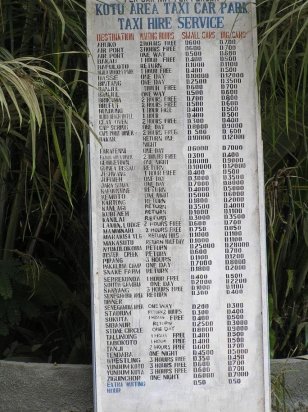
Up river tripMisc info.
If you want any other information please contact me mark@hows@org.uk
E-Mail Mark Hows
